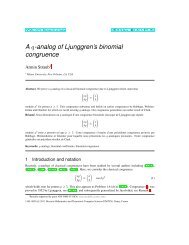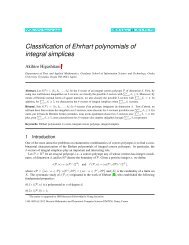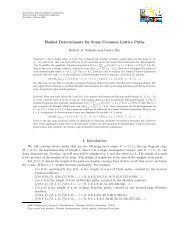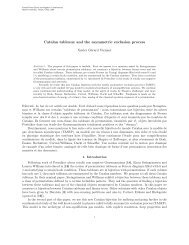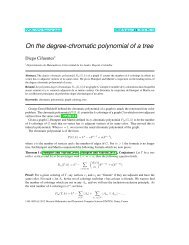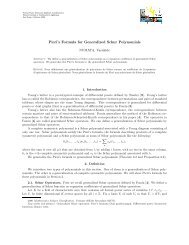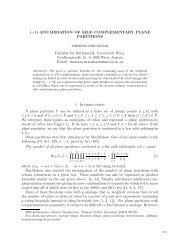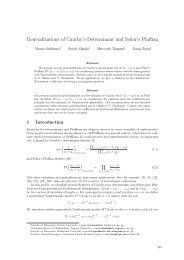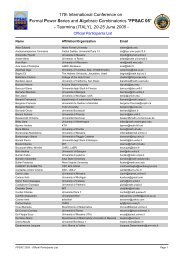Euler's partition theorem and the combinatorics of -sequences
Euler's partition theorem and the combinatorics of -sequences
Euler's partition theorem and the combinatorics of -sequences
You also want an ePaper? Increase the reach of your titles
YUMPU automatically turns print PDFs into web optimized ePapers that Google loves.
Θ (l)<br />
n : Bijection for <strong>the</strong> l-Lecture Hall Theorem<br />
Given a <strong>partition</strong> µ into parts in<br />
{a 0 + a 1 , a 1 + a 2 , a 2 + a 3 , . . . , a n−1 + a n }<br />
construct λ = (λ 1 , λ 2 , . . . , λ n ) by inserting <strong>the</strong> parts <strong>of</strong> µ in nonincreasing<br />
order as follows:<br />
To insert a k−1 + a k into (λ 1 , λ 2 , . . . , λ n ):<br />
If k = 1, <strong>the</strong>n add a 1 to λ 1 ;<br />
o<strong>the</strong>rwise, if (λ 1 + a k − a k−1 ) ≥ (a n /a n−1 )(λ 2 + a k−1 − a k−2 ),<br />
add a k − a k−1 to λ 1 , add a k−1 − a k−2 to λ 2 ;<br />
recursively insert a k−2 + a k−1 into (λ 3 , λ 4 , . . . , λ n )<br />
o<strong>the</strong>rwise,<br />
add a k to λ 1 , <strong>and</strong> add a k−1 to λ 2 .



